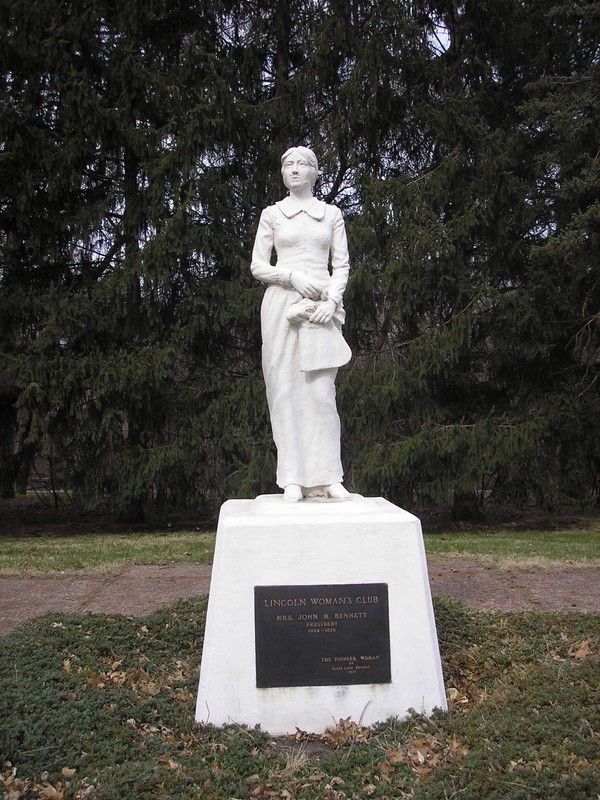The Pioneer Woman statue (Lincoln, NE)
Introduction
Text-to-speech Audio
1935 monument donated by the Lincoln (Nebraska) Woman’s Club. One of several statues in Lincoln-area parks sculpted by Ellis Luis Burman, who was employed by the Works Progress Administration's Federal Art Project. Design combines elements of other Pioneer Mother Movement monuments and the style of refined women's club members in that era.
Images
The Pioneer Woman statue

The Pioneer Woman with mustache

Backstory and Context
Text-to-speech Audio
In 1935, the Lincoln (Nebraska) Woman’s Club installed Ellis Luis Burman’s rendition of The Pioneer Woman in a public park. That year the club's study program selected the related theme of the Pioneer Woman. The statue had been commissioned a decade earlier at the height of the Pioneer Mother movement.
Burman's Pioneer Woman clasps a pocketbook and handkerchief, which makes her look more like a 1930s clubwoman than an 1850s pioneer woman. Like Leo Friedlander’s conservative statue for Denton, Texas, Burman's statue stripped his frontier woman of the accompanying children that were so typical of 1920s pioneer mother monuments. Rather than emphasizing maternalism, these pioneer women appeared virginal. Abandoning the darker hue of bronze, these utilized white materials to further emphasize their subjects’ purity and their whiteness.
Apparently not all Lincoln residents appreciated this statue that merged pioneer woman purity with the cultural refinement of a 1930s clubwoman. As of April 2009, someone had drawn a mustache in black marker onto the white statue.
Sculptor Ellis Luis Burman worked for the Federal Art Project of the Works Progress Administration (WPA), a New Deal program that put artists to work during the Great Depression. Burman produced several statues for Lincoln-area parks, including the pioneer woman, Rebecca at the Well in the sunken garden, the Statue of Liberty, and a soldier for Antelope Park and Smoke Signal depicting a Native American man for Pioneers Park. A group of Omaha, Winnebago, Sioux, and Ponca peoples camped at the park to witness the latter statue's dedication.
Sources
Palmer, Opal Y.. "Ada McGinnis Recalls Lincoln Parks' History." Lincoln Evening Journal (Lincoln, NE) June 9th, 1974.
"Park Statue is Proposed." Lincoln Evening Journal (Lincoln, NE) April 1st, 1935.
Photo by Cynthia Prescott
Photo by Cynthia Prescott
